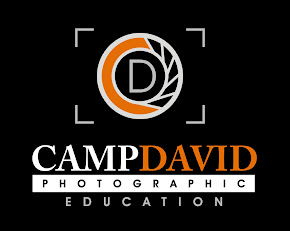However, we all know of those who are selling (or worse, giving) the files for little or no compensation at all! I can not even begin to think that I am making a profit (or even a reasonable living) if I am photographing a session for $100-$150 or a wedding for $750-$1000 and simply turning over a disk of printable images and a print license. I'm just leaving far too much money on the table that the same client is now going to spend with SOMEONE ELSE.
My business model is based on providing top-quality finished products to a client. I want to sell portraits, albums and frames at a price-point that allows me to make a living without spending the rest of my natural life in front of a computer. If you have a family or spouse (and want to stay married), my suggestion is that this is the way to go.
A number of years ago there was a team call "Power Consulting". Jerrold Deck and Sondra Ayers spoke on the important of "Market Positioning". You could position yourself as one of the following three types of merchants:
- Price
- Service
- Quality
As a Price-based vendor, you would be focusing on selling your product for a low price. Of course, you'll have to do a lot of volume to make any money, but you will definitely be busy!
As a Service business, you are focused on providing a great experience for your client. You take your time and overwhelm them with great service during and after the session.
As a Quality merchant, you feature only the best products. Print are mounted, lacquered, textured and delivered in quality packaging materials (not the plastic baggie the lab sent them back in).
You can even choose to position yourself as any two of these, as long as neither is price. (As a Price merchant, you won't have time to give good service and you won't have the profits to give top quality.)
Ultimately, you may choose whatever business model works best for you, as long as you are able to make a reasonable living doing it that way.
This past summer I actually had a client call me after her son's HS senior portrait session to tell me that "we are a very technologically advanced family and don't have photographs in our home. We prefer to put in a disk and watch them on our big screen tv. Our son doesn't need wallets; he just wants to share the images on Facebook."
She wanted only the digital files and no physical photographs. Is it a monetary decision? Initially, I didn't think so. Both of their children attend high-priced private schools and they drive some fairly high-end automobiles. They live in one of the high-end suburbs . . . surely this could not be about being cheap.
Since I don't sell (or give) digital files as a part of my business model, I quoted her a dollar amount for the files she wanted that was comparable my order average for a HS senior boy. It was then that she looked at me as if I was an alien. "That's ridiculous. I mean, I'd be willing to pay you the same amount as you charge for a 5x7 . . . "
So, I asked her how big the TV is on which she'll be viewing the images. "Oh, it's a 52" Sony, top-of-the-line. They'll look just like big wall pictures on that." My quote to her was in the same ballpark as I charge for a 20" or 24" portrait, yet she's only "willing to pay me for a 5x7."
We've done it to ourselves. Photographers (professional and otherwise) all over have set the bar so horrifically low that clients expect "all photographers" will follow suit. In the case of this woman, she left without placing an order. (I did receive a small print order from her via email a week or so later . . . but very minimal.)
Set the expectation with your clients from the beginning. We are trained artists and photographers. We are not mass-producing widgets for a nickel each, we are creating one-of-a-kind images and working with our clients on a personal level.
Is it okay to let a client walk? As painful as it is, the answer is Y-E-S. Not everyone is our target client; we need to identify that from the initial consultation. We have to allow them to aspire to own our work. Anything else devalues our own work and talents, as well as affects the profession as a whole.
Don't be afraid to say no . . . and always attach a price to the ability to say yes.
Remember, photography is not our life. Photography is what we do in our attempt to create a good life.
- David


Thanks for sharing this insight....great perspective & I appreciate the info.
ReplyDeleteThis is a very well written post. Thanks for sharing your thoughts
ReplyDeleteSo many great words of wisdom in this article! Thanks for sharing!
ReplyDelete